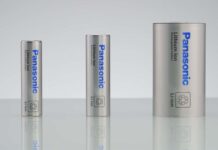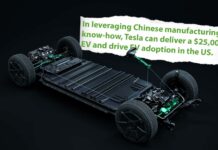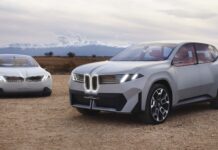[ad_1]
Battery packs are the most critical component of an electric vehicle, and they also happen to be the most expensive.
How much a battery pack costs largely depends the chemical composition and its capacity; raw material costs, production expenses, packaging complexities, and supply chain stability are also big factors.
Add to that the fact that automakers are starting to electrify their portfolios to include large trucks and SUVs, and it goes without saying that a battery pack can be very expensive.
While it’s difficult to get accurate estimates – this is not something automakers typically disclose – the folks from Visual Capitalist used data from Benchmark Minerals Intelligence to determine how much a replacement battery pack would cost on six existing and upcoming electric vehicles spanning various chemistry types and vehicle segments.
The cost of a new lithium-ion battery pack might be as high as $25,853 in the upcoming 2025 Ram 1500 REV, making it almost as expensive as an entire 2024 Toyota Prius, which starts at $27,650.
With a massive capacity of 229 kilowatt-hours and Nickel Cobalt Manganese (NCM) chemistry with cells from LG Energy Solution, the Ram 1500 REV’s battery pack was by far the most expensive one in the comparison. The battery pack alone is estimated to make up almost 32 percent of the cost of the entire vehicle.
The next most expensive was the battery pack of the 2025 Cadillac Escalade IQ, which has a capacity of 200 kWh. At $22,540, the electric full-size luxury SUV’s battery, which also features cells from LG Energy Solution but with Nickel Cobalt Manganese Aluminum (NCMA) chemistry, makes up 17 percent of the vehicle’s total cost.
At the other end of the spectrum, the 2023 Ford Mustang Mach-E has the cheapest battery pack in this study, estimated at $6,895. The 70-kWh pack with Lithium Iron Phosphate (LFP) chemistry featuring cells from LG Energy Solution accounts for 16 percent of the total cost of vehicle.
The other vehicles included in the comparison are the 2023 Tesla Model S, 2022 Rivian Amazon EDV, and 2023 Volkswagen ID.4. With the exception of the Mexico-built Ford Mustang Mach-E, all six EVs are made in the United States.
This comparison also highlights the differences between various battery chemistry types. The most expensive battery chemistry is lithium nickel cobalt aluminum oxide (NCA), with an average price of $120.3 per kilowatt-hour (kWh). Lithium nickel cobalt manganese oxide (NCM) cells are slightly cheaper at $112.7 per kWh.
Both chemistries contain significant nickel proportions, increasing the battery’s energy density and allowing for longer range.
Lithium iron phosphate (LFP) batteries are cheaper to make than cobalt and nickel-based variants, with an average price of $98.5 per kWh. LFP battery packs offer less specific energy and are therefore more suitable for standard- or short-range EVs.
NCM batteries dominated the battery market in 2021, with 58 percent of the market share, followed by LFP and NCA with 21 percent each. In 2026, however, the market share of LFP is predicted to nearly double, reaching 38 percent, while NCM is anticipated to make up 45 percent of the market and NCA is expected to decline to 7 percent.
[ad_2]
Source link













